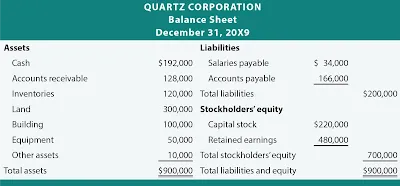What are Retained Earnings? How to Calculate Retained Earnings
Running a company is not all about ideas, plans, strategies, or tactics, it also involves working with numbers. Before commencing a business enterprise, you must acquire basic knowledge of financial indicators.
Retained earnings is one of the most crucial economic indicators that represent the smooth and effective operation of a business. What are retained earnings is one of the most frequently asked questions by novice in the financial sector and also students.
In this article, we will explain the definition, how to calculate to calculate retained earnings, and its implications on your business.
What are retained earnings?
Retained earnings is the cumulative earnings left with the business after it has fully paid all expenses and distribution to its investors or shareholders. The company uses retained earnings to reinvest in the business itself. Another name for retained earnings is accumulated earnings or retained capital. So anywhere you come across accumulated earnings or retained capital, just know they are talking about retained earnings.
By definition, a corporation has shareholders who have partial ownership of a company after they invested their money in it (bought shares). A part of the company’s net income belongs to the shareholders, which is paid to them as either stock or cash dividends.
Generally, when a company generates profits, business management will have some options to utilize this amount. They frequently pay out this profit as dividends to shareholders. But they can also decide to reinvest the surplus back to the business for growth purposes.
After dividends are fully paid to shareholders, the leftover net profit is the retained earnings for the reporting year. The retained earnings from the reporting year is then added to the retained earnings from the previous year.
The aim of withholding these earnings varies across the companies. Some businesses use this money to buy new assets, others spend on research and development. The common goal is to obtain more earnings in the future.
The time and method the corporation spends this money is dependent on its financial status. In some cases, but it is advised to wait for a few quarters or even a few years.
The amount of retained earnings is not stable, it is often adjusted according to changes in company operations and strategies. If the company suffers a net loss at the end of the reporting year, retained earnings may change to retained losses or accumulated losses.
Furthermore, if the business foresee that it cannot earn a sufficient return on investment (ROI), then they will decide to distribute those earnings to stockholders.
How are retained earnings represented on financial statements?
In financial statements, the amount of retained earnings can be found in the equity section of the company’s balance sheet, under the stockholders’ equity. They are reported for each accounting period, which is expectedly monthly, quarterly, and yearly. Some companies also include retained earnings on their income statements (trading, profit or loss account).
As retained earnings is an crucial financial performance metric that relates to the economic value created over a period, companies also prepare their statements of retained earnings.
Corporations put out statements of retained earnings to increase market and stockholders’ trust in their company as investors can judge the potential of the business by examining these statements.
Creditors also look at these statements before they give out credit to a company.
An overview of retained earnings
Retained earnings vs. Reserves
Retained earnings and reserves are similar, but they are not the same. A company's Reserves are included in retained earnings.
Reserves are a part of net earnings that are held back before dividends are paid; while, retained earnings are leftover after distributing dividends.
The main purpose of keeping reserves is to strengthen the financial position of the business and cover up for potential losses in the future.
Retained earnings vs. Revenue
Revenue is a top-line number that shows the financial performance of a company. In retail businesses, revenue is also known as gross sales. However, revenue has a broader meaning as it comprises of total income from any activities, not only sales.
Revenue is calculated before operating expenses. Retained earnings are a part of revenue, but they come after all expenses and distributions have been paid off.
Retained earnings vs. Net profit
Net profit or net income is the figure used to present the financial performance of a business. This is the revenue after all operating expenses, payroll, taxes, etc have been deducted.
Retained earnings and net profit work closely together. Any changes in net profit will directly impact the balance of retained earnings.
Retained earnings vs. Dividends
Dividends are a part of the company’s profits distributed to stockholders. They can be in the form of cash or stock. Retained earnings are the number of net profits subtracted from dividends.
Both forms of dividends (cash and stock) reduce the balance of retained earnings. Cash dividends are cash outflow that reduces the company asset on the balance sheet. Stock dividends reallocate a part of retained earnings to common stock, which reduces the value of stocks per share.
What are negative retained earnings?
Sometimes, retained earnings can be negative. When the company suffers a loss, the net loss is reported in the statement of retained earnings. When the net loss surpasses the retained earnings from the previous year, then these retained earnings become negative. In this situation, the company has an accumulated deficit.
Even a profitable business can report negative retained earnings. This occurs when the company shares more dividends than available money.
Negative retained earnings sometimes can be an early sign of potential bankruptcy of the company since this entails a series of losses.
How to calculate retained earnings
This section explains how to calculate retained earnings. We can calculate retained earnings by adding together the previous retained earnings and the current net income (or loss), then subtract the dividends paid out.
Below is retained earnings formula:
Retained earnings = Beginning retained earnings + Net income/loss - Dividends paid
As we proceed, we will have a bit deeper look at each part of the retained earnings formula.
Beginning retained earnings
The beginning retained earnings are exactly the retained earnings from the previous accounting period. They can also be represented as RETAINED EARNINGS BROUGHT FORWARD (b/f). This figure can be taken from the balance sheet of the previous reporting year. The number will equal to zero if your business has just started. And remember to label it correctly if your beginning retained earnings are negative.
Net income
Net income is the net profit or net earnings generated by the company. It is calculated by subtracting the revenue from expenses, interest, and taxes. This number will be positive if the business has made a profit, and negative if it suffered a loss. This number can be gotten from the bottom line of the income statement.
Dividends paid
Dividends paid are the payments to your company’s shareholders. Dividends can be issued in terms of stocks, cash, etc. Dividends are decided by the company's board of directors and approved by shareholders.
Some companies pay dividends quarterly, others pay monthly or semi-annually. The information about dividends is declared by the board and includes the price per share. Therefore, you will multiply the price per share by the number of shares bought to ascertain your share of the dividends.
Example on how to calculate retained earnings
How to calculate retained earnings is very simple, but you have to be careful when dealing with numbers.
For a better understanding of retained earnings and how to calculate retained earnings, we will do a calculation together.
Example: For the current period, your company has the following information:
- Beginning retained earnings: $30,000
- Net income/loss: $26,000
- Dividends paid: $18,000
Retained earnings = Beginning retained earnings + Net income/loss - Dividends paid
$30,000 + $26,000 - $18,000 = $38,000
- Therefore, Retained earnings = $38,000
Sample retained earnings as shown on a balance sheet:
Retained earnings show the financial health of a company
The amount your firm holds back as retained earnings can provide a much clearer view of the financial performance of your business than net income or revenue can.
Business indicators like revenue, expenses, or net income usually fluctuate monthly. However, retained earnings indicate a clearer view of how your company has earned, reserved, and invested.
Therefore, most potential investors carefully inquire into retained earnings when they examine your financial statements.
Retained earnings as a means of long-term source of funds
There may be a wrong idea that retained earnings are the surplus cash after dividends have been paid to shareholders. Actually, they aren't. Instead, retained earnings show how a company utilizes its profits.
For the sake of expansion and growth, there is a continuous need for the company to invest in its operation and new products or services. Growing businesses tend to retain more of their profits than already established ones. When a company spends its retained earnings judiciously, the stock value will increase greatly.
Limitations of retained earning
The total figure of retained earnings over a particular period may not give adequate insight. Even the observation over a longer period may only show how much the company has retained.
One of the most important indicator that both the board of directors and investors should look into is the returns on investments from the retained earnings. It is critical to evaluate how the company has utilized the retained earnings. Calculation of retained earnings in market value can be used to evaluate the change in stock price against the net retained earnings by the company.
Conclusion
Firms use the profits that they generates not only to pay dividends to shareholders and investors but also to build the business. How to calculate retained earnings has been explained. The retained earnings as at the beginning of the year, and current retained earnings can portray a growth pattern from one year to another.












